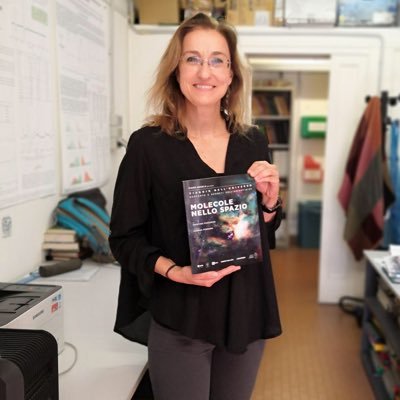One Upon the Time There Was...An Astrochemistry Story

Speaker: Dr. Cristina Puzzarini, University of Bologna
Host: Leah Dodson
Abstract: For many years, the interstellar medium (ISM) was considered too hostile for organic species to be formed. However, the detection in the last decade of molecules showing some complexity, like for example, propionamide, ethanolamine, indene and cyanonaphtalene, has changed this view dramatically. Indeed, the detection of more than 260 molecules in interstellar or circumstellar shells demonstrates that the ISM is characterized by a rich chemistry. Among the so-called “interstellar complex organic molecules” (iCOMs), those that are potentially prebiotic have been attracted particular interest in relation to the issue of how life has been originated. Understanding the chemical evolution of the universe is one of the main aims of astrochemistry. The starting point for the development of astrochemical models is the knowledge whether a molecule is present in the astronomical environment considered and, if so, its abundance. In this scenario, rotational spectroscopy plays a crucial role since the astronomical observation of spectroscopic signatures provides the unequivocal proof of the presence of chemical species. Molecular species in the gas phase are usually detected via their rotational signatures, with these accurately obtained from laboratory spectroscopy studies that are increasingly assisted by quantum-chemical calculations to guide and support the spectral recording and analysis.
While the evidence for molecular complexity in the universe is undisputed, there is still much to be understood about what molecules are present and how they are formed in the typically cold and (largely) collision free environment of the interstellar medium. Because of difficulties in experimentally mimicking the extreme conditions of the ISM, accurate computational approaches play a fundamental role in analyzing reaction mechanisms. At the low temperatures of the ISM, reaction rates are exquisitely sensitive to energetics and barrier heights, and their accurate evaluations require very advanced calculations of these energies. In a subsequent step, these need to be combined with suitable tools to compute kinetics.
In this seminar, by means of selected examples taken from the work done in my laboratory, I will address: (i) the interplay of experiment and theory in the field of rotational spectroscopy as a powerful tool in astrochemistry; (ii) the exploitation of state-of-the-art computational approaches to derive formation pathways able to explain molecular abundances; (iii) a rationalization of interstellar chemistry in terms of class of reactions.


